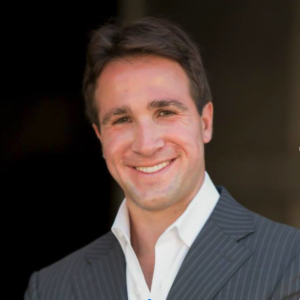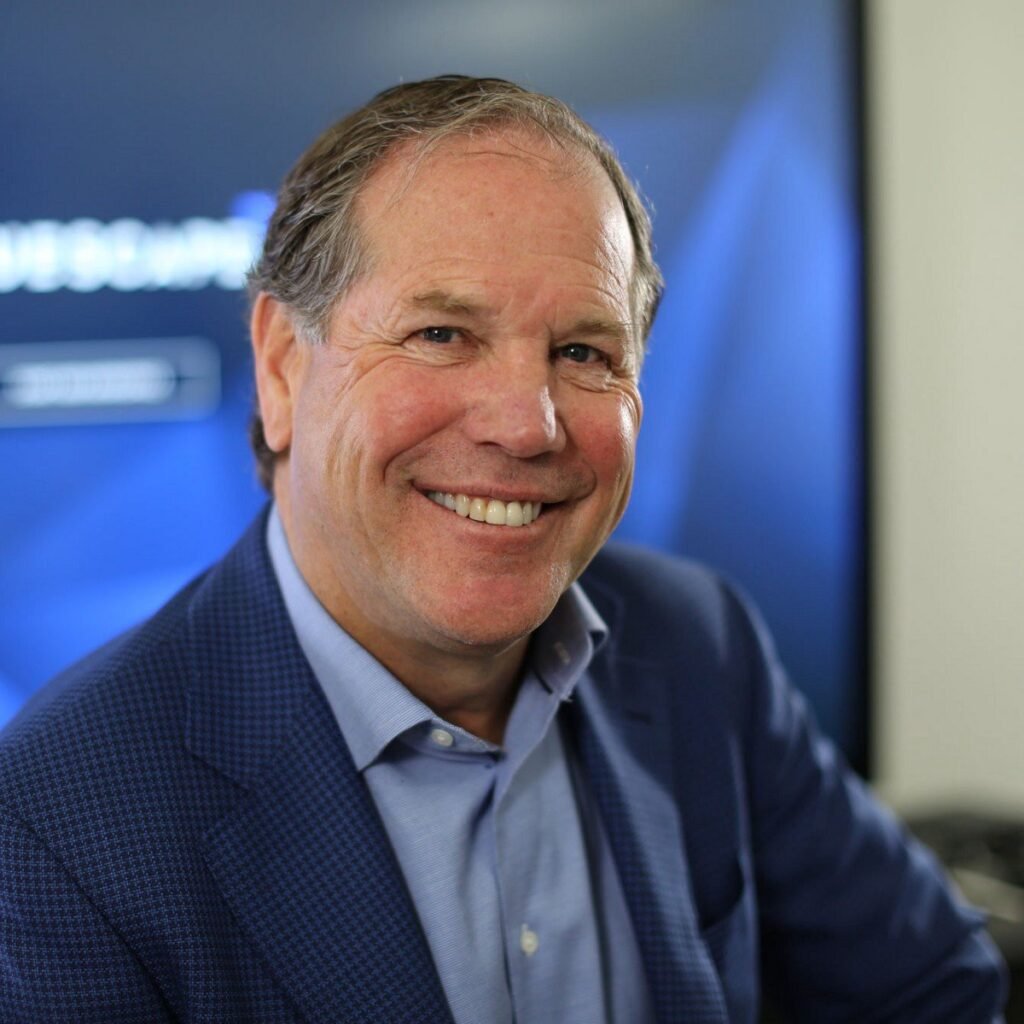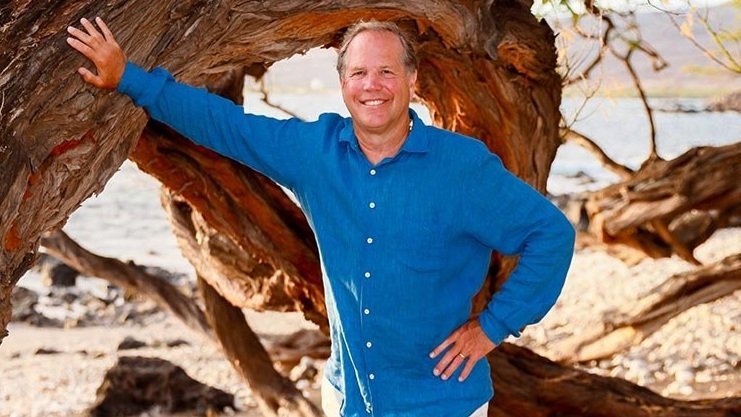I recently went one on one with Peter Jackson. Peter is the CEO of Bluescape and was formerly CEO, co-founder, and a board member of Ziploop Inc. which was acquired by SNIPP. Additionally, Peter has served as a board member and advisor to Eventbrite, DocuSign, and Kanjoya. Peter also founded and led several emerging companies to successful exits – taking Intraware to IPO and becoming President/COO of Dataflex after Granite Systems was acquired.
Adam: Thanks again for taking the time to share your advice. First things first, though, I am sure readers would love to learn more about you. How did you get here? What experiences, failures, setbacks, or challenges have been most instrumental to your growth?
Peter: I was born and raised in Berkeley, California, where my mother taught deaf and blind students from our home. As a child, I was very imaginative, always dreaming up inventions and businesses, which led to taking up small jobs wherever I could find them.
After graduation, I joined a very competitive company, working as an associate on their sales team. I quickly had to strategize how I was going to make it at this company and found a method that has defined much of my professional career which is working smarter, not harder.
While others were making 100+ calls a day, I picked 10 accounts and made them my priority. I got creative in how I connected with them, knowing the key was the quality of my relationships, not quantity. So, I’d meet my clients outside of the office instead of working late, eventually rising from the #400 salesperson to the #1 in less than two years.
I later co-founded two companies, Ziploop and Intraware, and even took Intraware for an IPO. I have served on the Boards of Eventbrite, DocuSign, and Kanjoya; and worked as President/COO of Dataflex. Now I serve as the CEO of Bluescape, the leading visual collaboration platform, but getting here was not as easy as it sounds. It’s cliche, but the path to where I am today has been lined with setbacks. I often say I’ve gone from the penthouse to the outhouse and climbed my way back–some might even call me the comeback king.
In the late 90s I was riding on the high of the Internet boom, but no one prepared me when the dot com bubble burst and everything came crumbling down in the early 2000s. When I was leading Intraware, the market collapsed rendering our customers penniless and creditors merciless. Tech was still very new and many investors pulled back, but I managed to raise cash from private investors, helping to retire about $25 million. However, even with that, Intraware was in bad shape and so was I. Many times I thought about handing Intraware over to creditors, which would have spared me a lot of the headache, but scraping to save the company and rebuild the business was more rewarding than the initial success.
As mentioned, Intraware ended up going from $40 million in debt in 2001 to generating enough cash flow to sell for $27 million in a matter of seven years. Without question it was one of the hardest tasks I ever faced, but also the most rewarding. It’s prepared me for everything I faced after, and is a large part of why I have been able to make Bluescape a success amidst a global pandemic.
Adam: In your experience, what are the key steps to growing and scaling your business?
Peter: Growing and scaling your business is no easy task. I’ve done it multiple times, but each time I focused on four main steps:
Work Smarter, Not Harder: I learned this back in my early days as a salesman. You cannot prioritize every client nor can you sell to everyone. You have to be strategic about what you are offering and to whom you are offering it. Even if you have a universal product, everyone will have a different need for it, so you must tell all of your audiences a different story. You have to hone in on those that will offer the greatest return on investment for your business instead of trying to reach everyone.
Invest in Technology & Talent: These are the bread and butter of every business. Technology, now more than ever before, is critical to a business’s success. However, while every business utilizes technology, it’s about finding the right technology for your business. It’s important to know where your data or source code is stored. What are the capabilities of the technology I’m investing in? What are the weaknesses of this tech? These are all things to consider when trying to grow your business. It also goes without saying that you need talented individuals that are passionate about the work you do.
Pray for the Highs, But Prepare for the Lows: As someone who rode the high of the internet boom for a while, it was rattling to see it all come crashing down faster than it was built. With any business you will have highs and lows, it’s important to be prepared for the setbacks when scaling because they will happen, it’s inevitable. Preparation is crucial to the comeback.
Adam: What is your best advice on building, leading, and managing teams?
Peter: We’re all passionate about innovation and success, but leaders need to be equally focused on respect and accountability. The past few years have been challenging, impacting every facet of our lives – from health and safety to financial and economic security. The reality is that leaders and managers simply don’t know the full story of what’s going on in their employees’ lives, which is why having the tools and infrastructure in place to succeed is so important. Coupled with the mindset of compassion and understanding, teams will be better equipped to do their work and communicate with whomever. That mindset will instill loyalty and make your company somewhere where employees love the work they do.
An example from my own life was back in 1994 when I was tasked with managing six different divisions of operations and consolidating company spend. I had to operationalize, so I had my teams work from home to increase efficiency. Of course, Skype and Zoom didn’t exist then, so our relationships with each other and with our clients was critical to making the job work. In that role I learned how important it is to stay engaged, no matter how difficult it is to communicate. It’s a lesson that was invaluable to me, especially during the pandemic, and allowed me to lead with confidence during a time of great uncertainty for many.
Throughout the pandemic, I made a conscious effort to check in with employees at least once a week and continue to do so. I think that making each employee feel appreciated and heard is the best way to boost morale and productivity. I really believe success is about productivity, not time. Productivity leads to the business making money, and to do that, your workforce needs to feel like they have the right tools, whether it’s education, technology, environment — or especially mental health.
Adam: What are the most important trends in technology that leaders should be aware of and understand? What should they understand about them?
Peter: The future is visual and we’re seeing a huge boom in visualization technology. We’re seeing it everywhere with the rise in AR, AI art, streaming services, the growing need for better video conferencing services, and so on. Everything we are consuming is through a visual medium.
Leaders need to be investing in visual services and technology. At Bluescape, we realized this pretty early on during the pandemic. Remote work was grueling, complicating collaboration and lacking visualization. With so many of our customers being in the film and television industry, which is solely focused on visualization, we knew tools that allowed for remote or hybrid work—because that is not going away–while also providing high-caliber visualization, were critical. Therefore we added Popsync to Bluescape which lets you search multiple image libraries at the same time. By helping teams find that perfect image to capture an idea or emotion more quickly, they can collaborate and communicate more efficiently.
It’s technology like this that allows users to visualize and collaborate better regardless of if they are in the same room, country or continent that leaders need to invest in. These conversations about returning to the office are fruitless. Innovation has continued to happen for the last two years remotely, proving when you have the right talent and right technology it doesn’t matter where you work. My advice: leaders should prioritize and invest in the right people, the right technology. Focusing less on micromanaging where employees are working and focusing more on how they are working, will offer a greater return on investment.
Adam: What do you believe are the defining qualities of an effective leader?
Peter: You must have honesty and integrity. People are supremely intuitive and will gravitate towards you if they believe in what you stand for. Amid record resignations and burnout, it’s critical for leaders to lead with compassion, empathy and accountability. Now more than ever, employees and consumers are looking to either work for or associate with companies that align with their values, so purpose-driven organizations are crucial. Leaders that don’t possess the same qualities will either need to quickly learn, or risk falling behind competitors.
Adam: How can leaders and aspiring leaders take their leadership skills to the next level?
Peter: Leadership all comes down to one simple thing: communication. A true leader must be able to communicate with others clearly
To take leadership to the next level, leaders need to inspire and connect with others and that comes down to communication. As I previously mentioned, people gravitate towards a leader who is honest and integrous. A leader is someone who can show humility and be able to ask for support from others when needed, while also being capable of providing support. An effective leader knows how to inspire their teams, not micromanage or control.
Adam: What are your three best tips applicable to entrepreneurs, executives, and civic leaders?
Peter: As a veteran entrepreneur and leader, I have learned a lot throughout the course of my career. Every win I had became a success story, while every loss became a motivation and every mistake a learning experience. If I had to take all of my experiences and package them into three tips for future leaders and entrepreneurs it would be:
Realize nothing will go as planned and will always take longer than expected. It’s impossible to plan everything and even the best laid plans fail. You have to be prepared for something to go awry. Always expect a project or new business venture to take twice as long as you plan and cost double. Setting these expectations with yourself early will save you some undue stress. It’s also important to also set these expectations with your family, friends, investors and employees. Building out a contingency plan is a critical business play that will set you up for success in the long run.
Expect investors to see success as expected and failure as a disappointment. It sounds obvious, but investors will be your biggest supporters when you are succeeding, but your harshest critics when failure strikes. Investors are like your home. You love it when it’s providing you shelter, but the second a pipe bursts, you curse it. Investors do the same with your business. Despite the risks they take with investing, they still do not appreciate that risk coming to fruition.
Always be transparent. People crave accountability and transparency, now more than ever. To be successful you also have to be open and honest because stakeholders will not take kindly to being misled. No one’s business journey is linear, so transparency is essential to remaining realistic with yourself and cultivating trust with your stakeholders.
Adam: What are your best tips on the topics of sales, marketing, and branding?
Peter: Sales, marketing and branding all have one thing in common: selling a product or service. To do this effectively, the most important thing is to know the product or service better than anyone else. You have to be the expert on what you are selling. The biggest advocate for the product or service and the staunchest supporter.
Additionally, you never know who could buy your product. When I first started out in sales, it was a Friday night and I was out after work when I saw another gentleman who immediately started engaging with me in conversation. During our conversation, he told me he just won a major contract and asked what I did for a living. I had explained I was in tech, selling equipment that big providers couldn’t manage. He then told me he “just made my life” and to come to his office on Monday. That Monday, his partner handed me a huge stack of paper, easily worth $35 million in orders. I brought in $20 million from that deal, bringing me to the #1 salesman.
It was through that encounter that I realized, you have to always be ready to sell or market your product. A simple conversation over a drink on a Friday made $20 million. Never underestimate the power of connection.
Adam: What is the single best piece of advice you have ever received?
Peter: Someone once told me hope is not a strategy and that was the best advice anyone could have ever given me. While it is important to have hope, it’s not enough to build a business. Even the smartest, most innovative business idea cannot get off the ground without the right strategy. You have to invest the time, energy and money to achieve success. Hoping your business will succeed is not enough.









